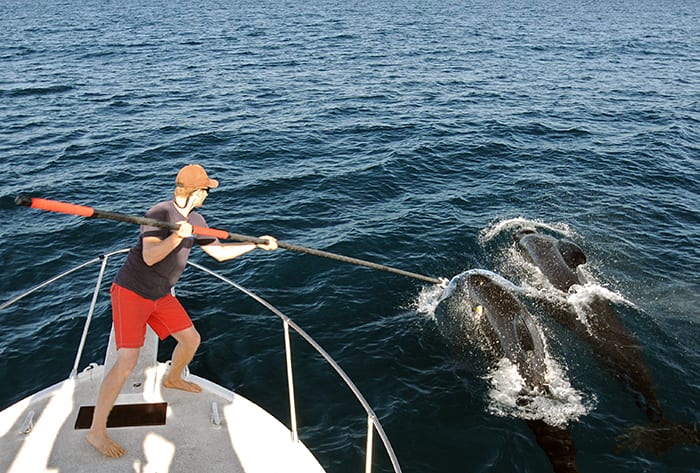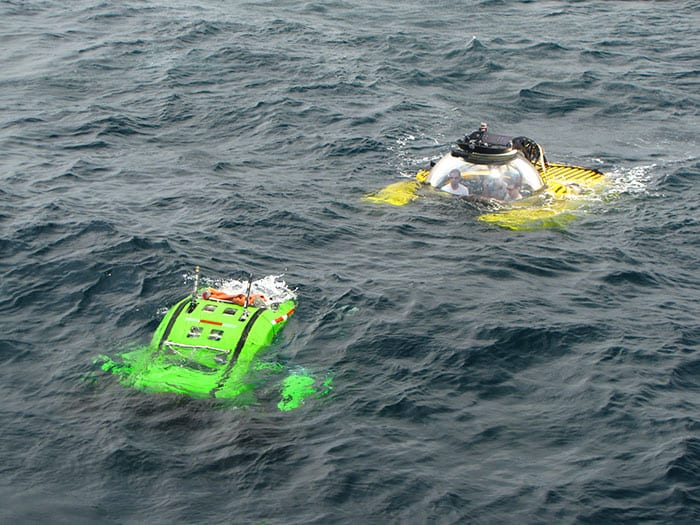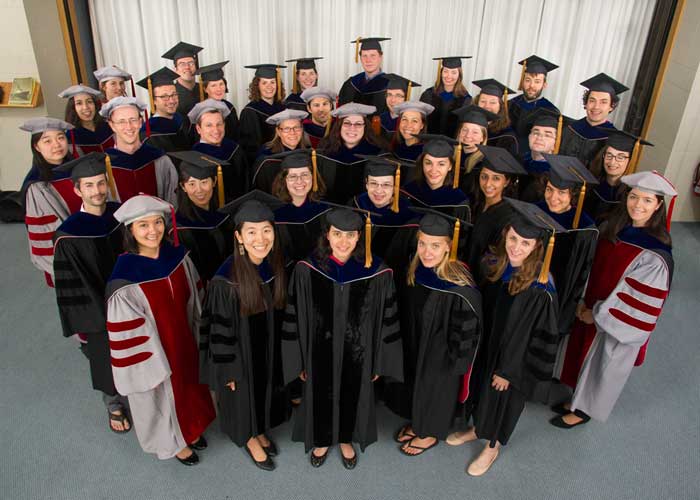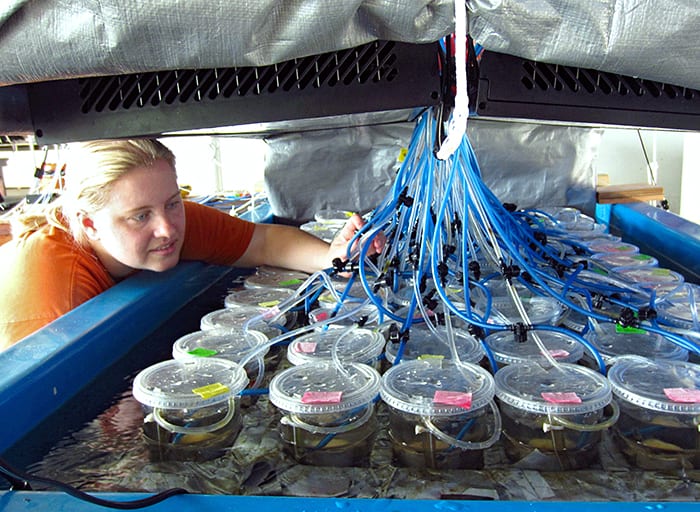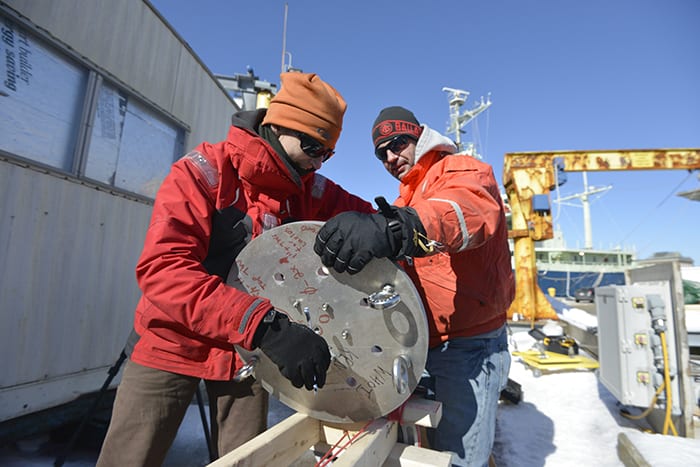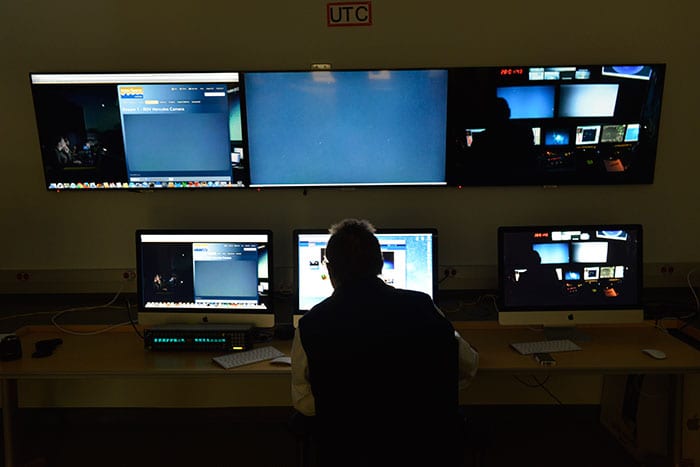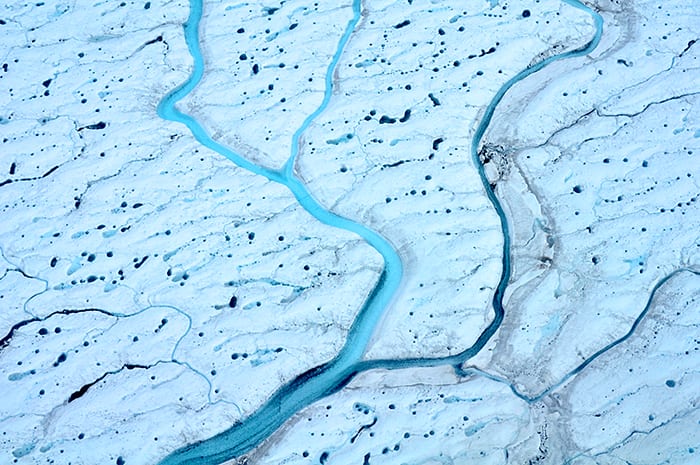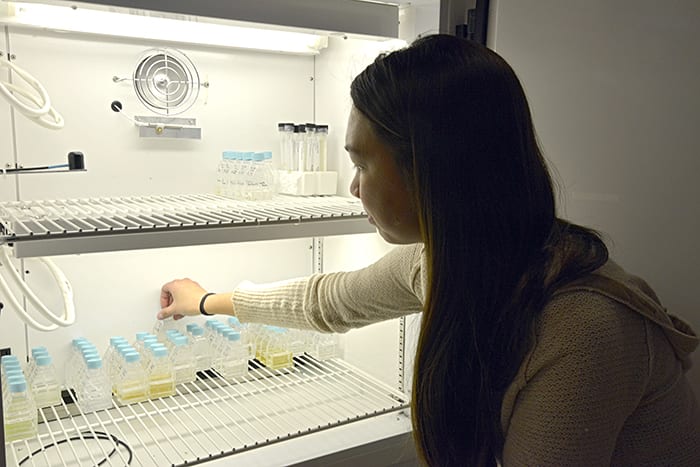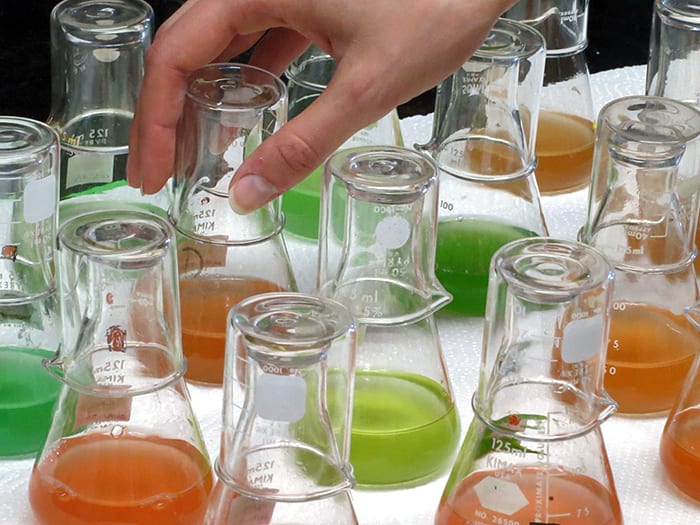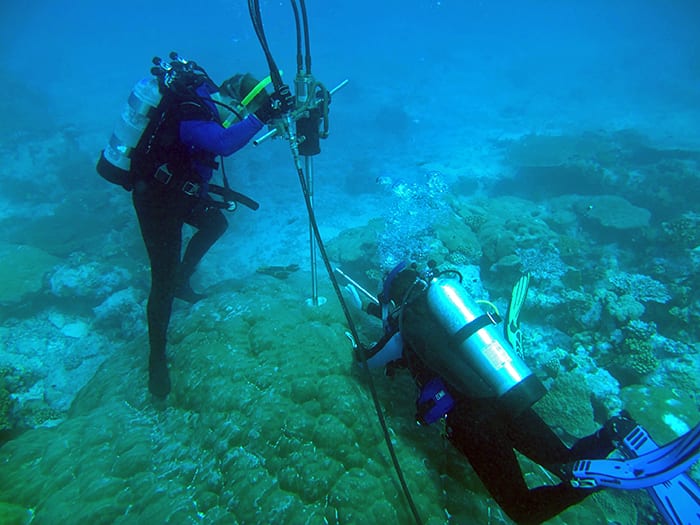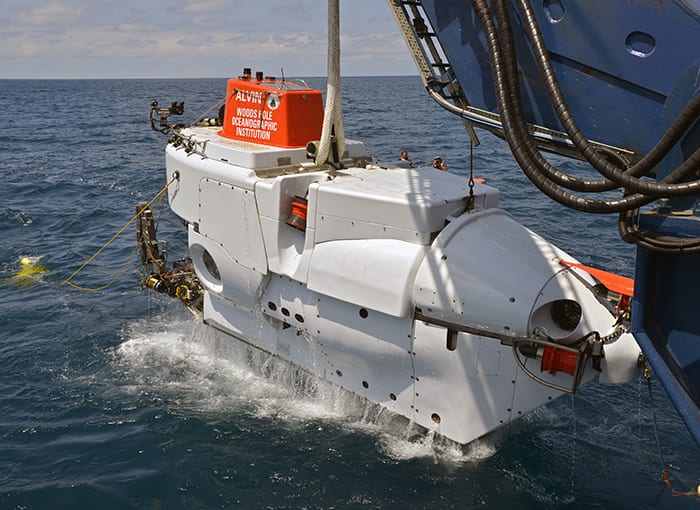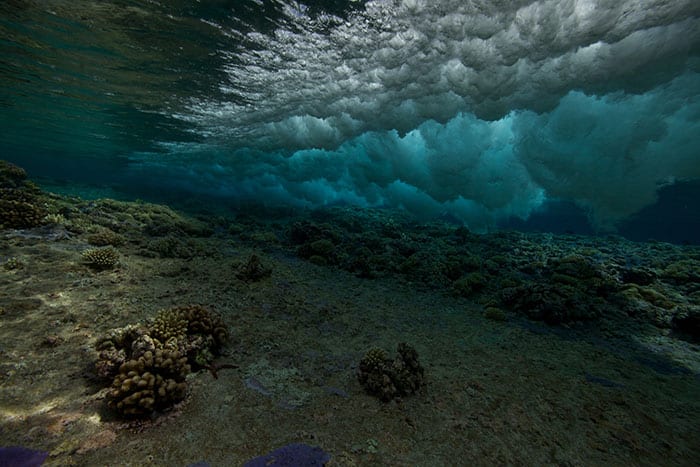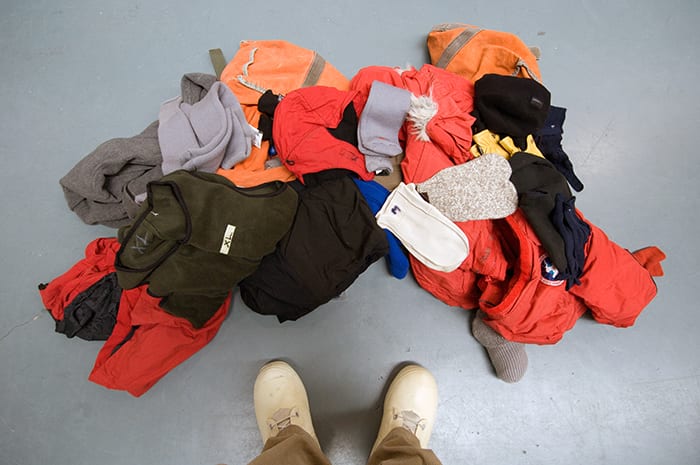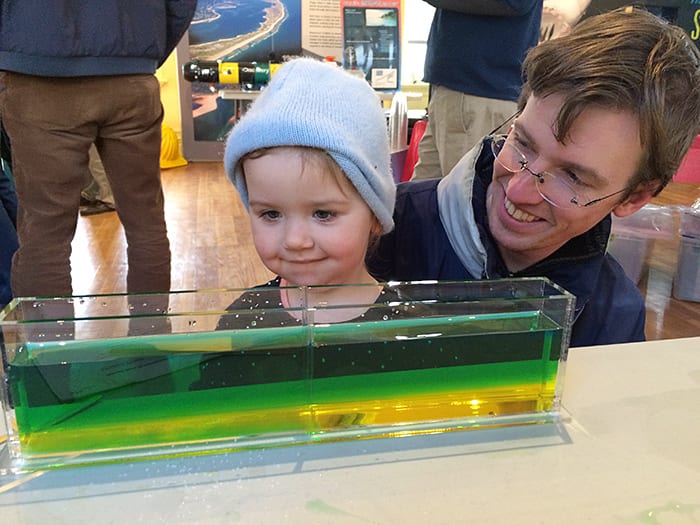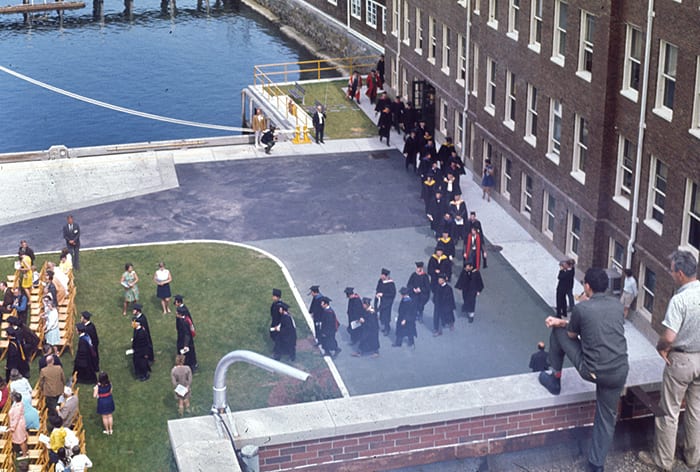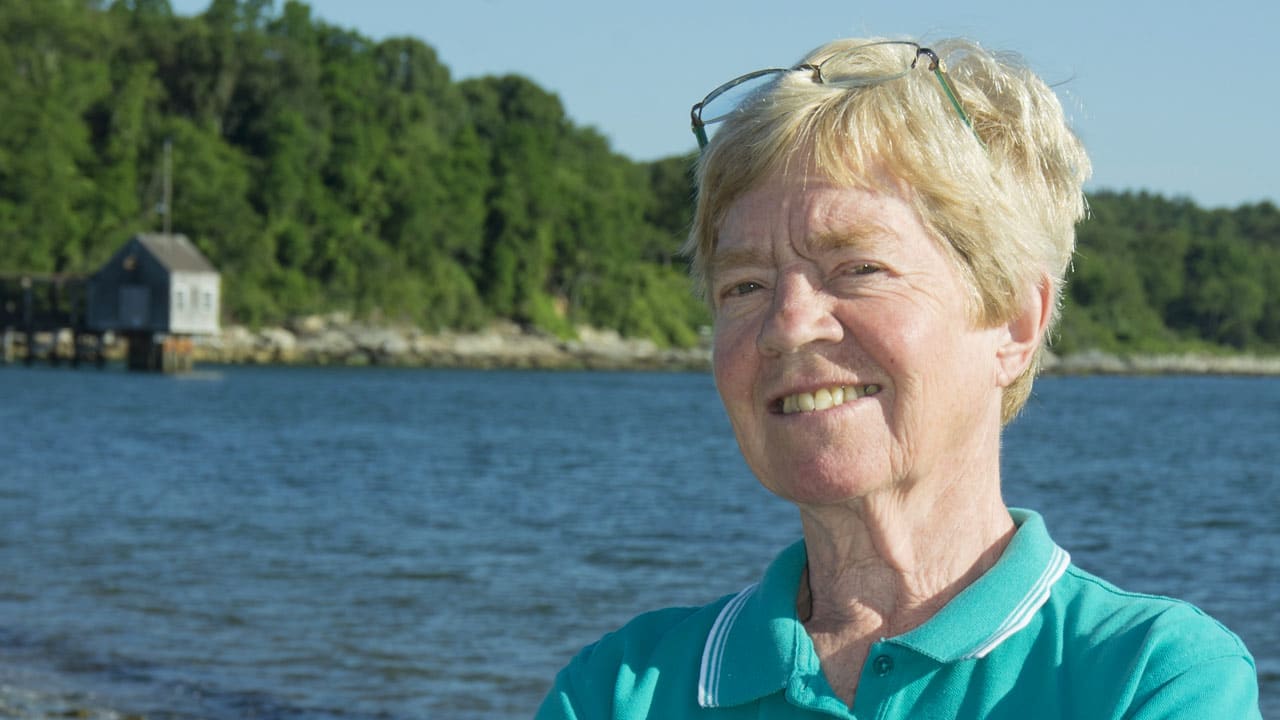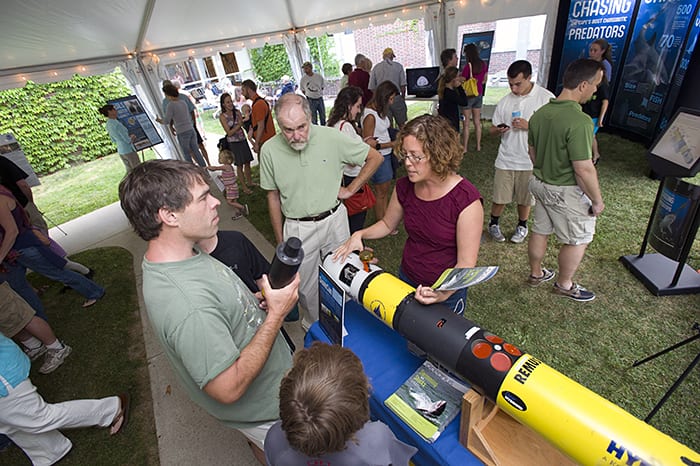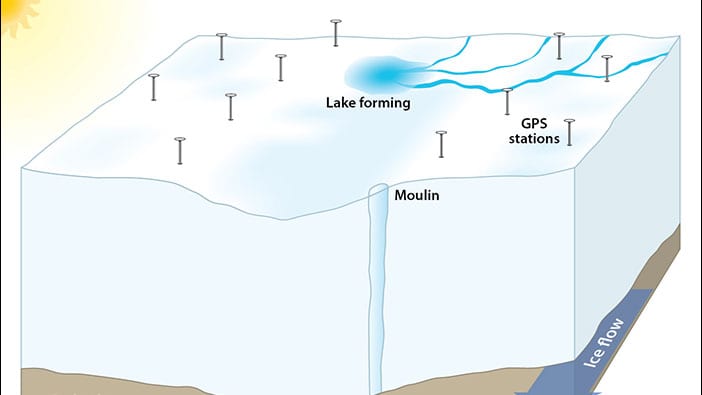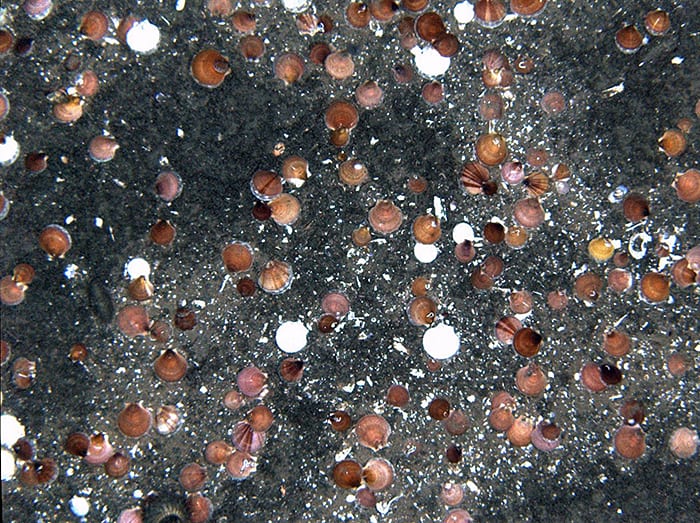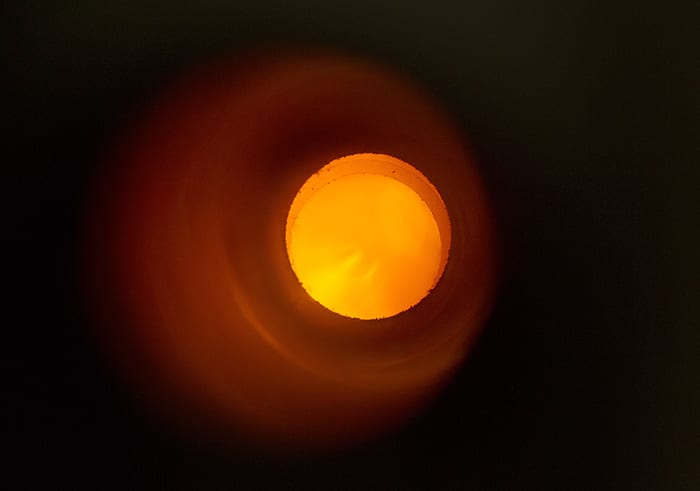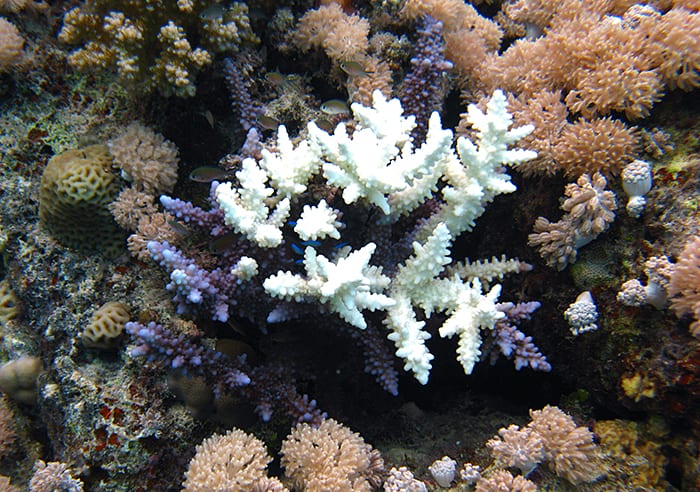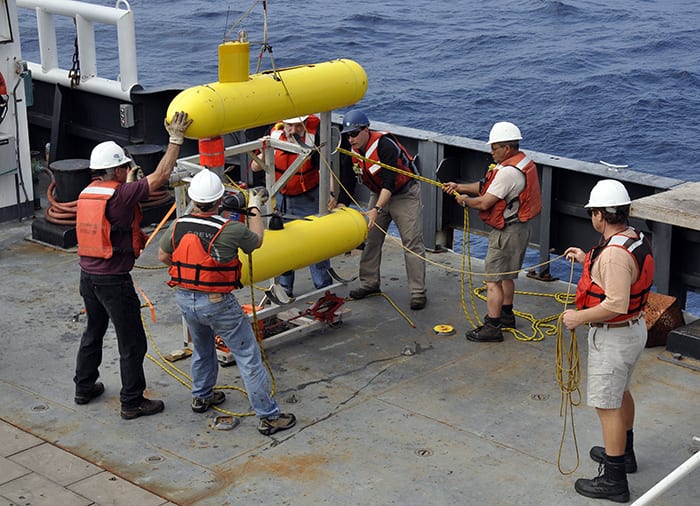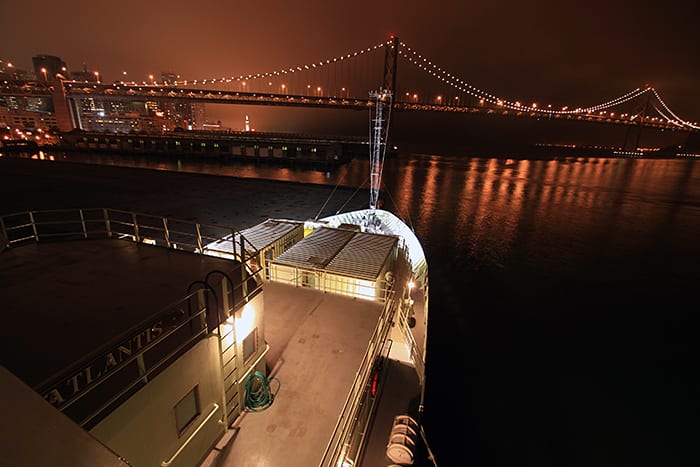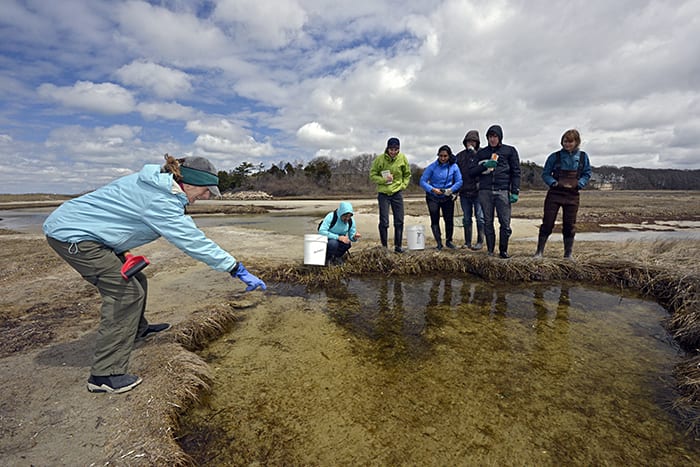Multimedia Items
Tag and Release
MIT-WHOI Joint Program student Nicholas Macfarlane applies a DTAG to a pilot whale in the Strait of Gibraltar. The digital acoustic recording tag was developed at WHOI in 1999 by…
Read MoreFinal Check
The Deep Rover 2 (foreground) in the water after being launched from R/V Alucia with a team that includes WHOI engineer Mike Skowronski (left inside the sphere) looking on from…
Read MoreThe Graduates
The MIT-WHOI Joint Program in Oceanography/Applied Ocean Science and Engineering, created in 1968, has graduated nearly 1000 alumni. Each year, graduating Joint Program students participate in the MIT commencement. Every…
Read MoreCorals and carbon
MIT-WHOI Joint Program student Hannah Barkley studies the impacts that warmer, more acidic seawater may have on corals. As atmospheric carbon dioxide rises, the ocean is absorbing more of the gas,…
Read MoreAssembly Line
Technicians Meghan Donohue (left) and Andrew Davies worked through a bitterly cold morning in February to assemble a new expendable spar (X-Spar) buoy conceived by WHOI scientists Carol Anne Clayson…
Read MoreMission Controller
Geologist Chris German monitored dive operations of the NOAA remotely operated vehicle (ROV) Herculese live from the Coleman and Susan Burke Operations Room at WHOI. The dives were part of his…
Read MoreSpring Melt
After long dark winters, sunlight returns to Greenland each spring. Meltwater streams into depressions in the ice to form large supraglacial lakes that can be miles wide. Thousands of these…
Read MoreHandy Trick
WHOI biologist and NSF post-doctoral fellow Holly Moeller examines some of the marine microbe cultures she is growing in light and temperature conditions that mimic parts of the open ocean.…
Read MoreCulture Club
These flasks contain different types of Synechococcus, single-cell photosynthetic bacteria that are one of the most abundant and critical organisms in the ocean. They are, however, notoriously difficult to culture in…
Read MoreRecord Retrieval
WHOI geologists Konrad Hughen and Colleen Hansel core into a Porites lobata coral colony on the leeward side of Danger Island in the Chagos Archipelago of the British Indian Ocean Territory.…
Read MoreReady to Dive
The human-occupied submersible Alvin achieved certification from the U.S. Naval Sea Systems Command (NAVSEA) to dive to depths of 4,500 meters (about 2.8 miles) during tests off the coast of…
Read MoreWorld Oceans Day 2015
Today is World Oceans Day. The global ocean is one of the keys to life on Earth. It helps regulate our climate and our water supply, supplies oxygen to the atmosphere, provides…
Read MoreKeeping Warm
The Clothing Distribution Center of the U.S. Antarctic Program in New Zealand provides one-stop shopping for polar explorers. If you are going south to the Antarctic continent on their watch, then you…
Read MoreLayers of Knowledge
A young visitor to WHOI’s Ocean Science Exhibit Center watches a water density demonstration that explains how layers can form in the ocean. To participate in activities like this and…
Read MoreCongratulations Graduates
In June 1970, WHOI personnel watched the first commencement ceremony of the MIT-WHOI Joint Program. Since then, the program has graduated more than 900 students, many of whom have gone…
Read More2015 Ketchum Award – Dr. Candace Oviatt
Under the Waves, June 7
Visitors to a 2013 WHOI public event listened as research engineer Gwyneth Packard explained the workings of a REMUS 100 autonomous underwater vehicle like the one that was featured during…
Read MoreTriggering Hydrofractures
Seafloor in Stereo
NOAA’s HabCamV4 imaging system was developed by WHOI scientists and engineers and captures six stereo image pairs per second resulting in one million images per day as it is towed 3 meters…
Read MoreFire in the Hole
A small sample of sediment contained in a tin “boat” burns in a flash of light and 1700ºC (3092ºF) heat at the WHOI Organic Mass Spectrometry Facility. Gases released during combustion…
Read MoreLiving Laboratory
The colors in coral come from symbiotic algae cells living inside individual corals organisms, or polyps. This “bleached” coral has expelled much of its algae in response to the stress of unusually…
Read MoreGone Fishin’
In August 2011, an interdisciplinary team launched a SeaBED-class autonomous underwater vehicle named Mola Mola from the NOAA research vessel Henry B. Bigelow. Scientists on the team came from NOAA, Rutgers…
Read MoreNot a Creature Was Stirring
In 2008, the research vessel Atlantis passed a quiet night tied up in the glow of the Bay Bridge between San Francisco and Oakland. Not every night on the water can be this peaceful,…
Read MoreSpring at the Beach
Research specialist Stace Beaulieu points to the location of worm burrows on the bottom of a tide pool during an early spring field trip as part of the Biological Oceanography…
Read More
